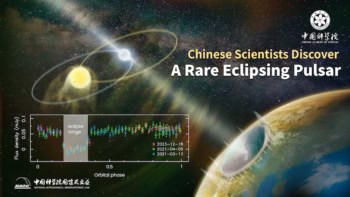
Scientists working on the Planck microwave probe have presented the mission’s first scientific results here at the 217th meeting of the American Astronomical Society meeting in Seattle. The results include the discovery of thousands of new cold cores in the Milky Way and a new way of spotting extremely hot galaxy clusters.
The European Space Agency’s Planck probe was launched in April 2009, and is designed primarily to map the cosmic microwave background (CMB) – a remnant of the Big Bang that pervades the universe. However, the mission’s two instruments are also proving very useful at studying smaller structures such as stars and galaxies. Many of these new data will be used by astrophysicists to inform studies that use a number of other ground-based and space telescopes.
Introducing the results in Seattle, Planck scientist Charles Lawrence of the Jet Propulsion Laboratory described these structures as “bugs on the windshield” in the Planck data. So far, Planck scientists have written 18 scientific papers describing these bugs, as well as the first catalogue of objects seen by the probe – including a large number of never-before-seen structures.
‘Teetering on the edge of star formation’
These include 10,000 cold, dense clouds of gas in the Milky Way called cold cores. They are thought to be some of the coldest objects in the universe and form when diffuse clouds of gas cool and contract. According to Planck scientist George Helou of Caltech, cold cores are “teetering on the edge of star formation”. Therefore, the study of cold cores could provide important information about how stars form. “It’s always coldest just before a star is born,” said Helou.
One early finding is that cold cores can be up to 30 light-years across and weigh in at 1000 solar masses. This came as a surprise, according to Helou, because larger cores were not expected to survive being jostled about by the rotation of the Milky Way. Planck also found cold cores with temperatures as low as 7 K, which Lawrence described as “gratifying”, because such temperatures had been predicted by theory.
Hotter than the Sun
Planck has also proven itself to very useful in the study of massive galaxy clusters, which can contain hundreds of galaxies and are the largest structures in the universe that are held together by gravity. These are mostly invisible dark matter but also contain large amounts of extremely hot gas at 107 Kelvin – which is much hotter than the Sun.
Indeed, the gas is so hot that it emits mostly X-rays and can’t be seen with an optical telescope. However, it can be seen by Planck because microwave radiation passing through a cluster is given an extra energy “kick”. This is called the Sunyaev-Zel’dovich (SZ) effect and can be detected by Planck.
According to Planck scientist Elena Pierpaoli of the University of Southern California, the probe has already discovered 12 new galaxy clusters. Many of these have dim X-ray signals and therefore would not have been spotted by X-ray telescopes. Another benefit of Planck, according to Pierpaoli, is that the SZ effect is not affected by long distances and so the probe can look back further in time.
What about the CMB data?
Although these dead bugs are very useful to astrophysicists, the main prize from Planck will be a much better insight into the early universe brought by its superior CMB measurements. Unfortunately cosmologists will have to wait another two years before these data are released – despite the fact that Planck has already produced the best map of the CMB yet. The reason, according to Lawrence, is that more measurements of the CMB intensity and polarization are needed before cosmologists can differentiate between various phenomena in the early universe.



